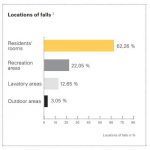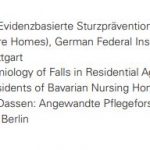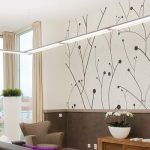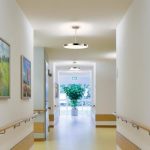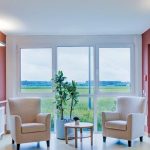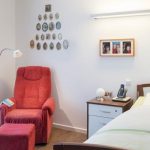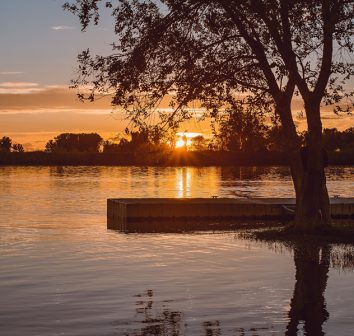
Lighting for Senior Care | Overview
Good Light Enriching Life
The rising life expectancy is a blessing, but it also imposes high demands on the healthcare provisions of nursing homes. A professional light concept accounts for the individual requirements of operators, personnel, residents and visitors.
More Light Less Shadow
Our long term expertise, close contact with scientific research and frequent dialogue with the nursing and care industry enable Derungs light solutions to meet the requirements specific to old age and improve quality of life. Our innovations are constantly optimised by scientific evaluation.
Hospital Products Australia and our Aged Care Lighting partner, Derungs, are passionate about increasing light for protection in our later years.
We are very pleased to share some of our research and insights with you and encourage you to contact our Health & Aged Care Lighting Specialist Team to organise a more in-depth and personalised conversation about the integration of proven technologies into your Aged Care Lighting concept.
PERCEPTION – Sight in our senior years
When eyesight deteriorates due to age or illness, it has far-reaching consequences for independence. Those affected quickly become anxious and increasingly insecure about moving around.
Light cannot correct deteriorating eyesight, but it can help to compensate, restoring self-confidence. Proper illumination helps avoid visual missteps and prevent falls.

FALL PREVENTION – Light as a silent helper
Serious injuries, such as hip fractures, lead to a long lasting reduction in independence for the majority of those affected. A bad fall can also cause the person to fear further falls and to limit the scope of their activities as a preventative measure.
Based on research conducted by Derungs in Europe we know that;
- one in three “over 65s” typically have a fall at least once a year.
- among “over 80s”, this figure is one in two.
(1) Of between 1.6 and 2 million falls per year in Germany it was estimated that:
- 30-40% of falls are preventable
- 30-40% of accidents occur in the action of standing up or sitting down
- 20-25% of fall-related injuries are avoidable
(2) Of falls in senior care homes:
- Most falls occurred in the residents own rooms
- Falls also occurred in the bathroom and corridor
- Fall rates are high in hospitals and in rehabilitation and geriatric wards.
(3) The key risk factors for a fall include:
- Medication
- Previous falls
- Difficulties with mobility and balance
- Incontinence
- Reduced cognitive abilities
Light Related Causes of Falls
A good lighting concept for aged care will carefully select a minimum ‘Lux’ or light output, combined with appropriate light tones – or colour temperatures and blend direct and indirect lighting whilst utilising glare-free technologies. The goal is to clearly define spaces and eliminate shadows which, as they are sharp transitions between light and dark and shiny patches, are interpreted as obstacles.
- Shadows are interpreted as obstacles
- Shadows increase the risk of a misstep
- Reflections on the floor are confusing and interpreted as water
- Passing shadows can be unsettling and frightening
- Shadows across a person’s face, caused by lighting, trigger fear and change the appearance of the face.
- Dark ceilings and recesses make areas feel confined and threatening

Preserving the independence of residents begins with exercise programs to maintain mobility but also includes modifications to the environment such as lighting, floor coverings and handrails.
Sophisticated lighting design helps to instill a feeling of security and increases residents’ confidence when moving about.
Older Australians can thus enjoy a more active involvement in their surroundings as pleasant lighting also encourages use of the recreation and communal areas.
Other light-related causes of falls include:
- Glare – Older people are very sensitive to glare, which can cause them to miss obstacles in their path.
- Transitions – Older people require more time for their eyes to adjust to extreme transitions between light and dark, for example, the corridor (typically 500 lux at eye level) and the residents room (typically 100-500 lux).
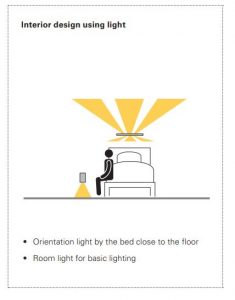
DEMENTIA – The Greatest Challenge
Dementia patients require intensive support and care – often around the clock.
Independent living without help suffers considerably or is even impossible. The progression of dementia causes the sufferer to be increasingly confused by their surroundings. It is difficult for the person concerned to process environmental stimuli properly and to react accordingly.
Consequently, secondary symptoms such as anxiety, agitation, passiveness or delusions can develop. Some also experience day/night confusion, which in some cases is a complete reversal of the wake/sleep cycle.
Lighting for people living with dementia must perform three main functions:
- Sufficient, low shadow basic lighting
Fall prevention & accessibility
Avoidance of missteps
- Biologically effective lighting
Regulation of the body’s internal clock
Stimulation in the morning and calming effect in the evening
- Care & examination lighting
Care and medical treatment
Examination lighting with optimal colour rendering properties
Circadian Lighting / Humancentric Lighting
Light is everything in nature. It provides growth, diversity and beauty. Light is therefore the most natural nourishment in the world for us!
Light affects important hormonal and metabolic processes, synchronizing our internal clocks again and again. Light gives our lives rhythm.
Whenever there is a lack of natural daylight our rhythm is disrupted. Circadian Lighting, also known as Humancentric Lighting recreates the effects of natural daylight, restoring proper rhythm and balance to peoples lives.
People living with dementia are often in “a perpetual fog” which is reinforced by insufficient light and poor vision.
The Visual Timing Light system by Derungs is a form of Circadian Lighting and provides gentle and effective support to reduce discomfort and normalise wake/sleep cycles.
A full description of Visual Timing Light (VTL) can be found at

Downloads and Links:
| Brochures: | HPA Derungs Visual Timing Light Brochure |
| Knowledge: | HPA Derungs VTL Reference Report |
Further resources can be found on the HPA website:
HPA Website – Visual Timing Light (VTL)
HPA Website – Light Planning Recommendations for Aged Care Living
Contact HPA Today for further resources and advice – 1300 HPAUST / info@hpaust.com

